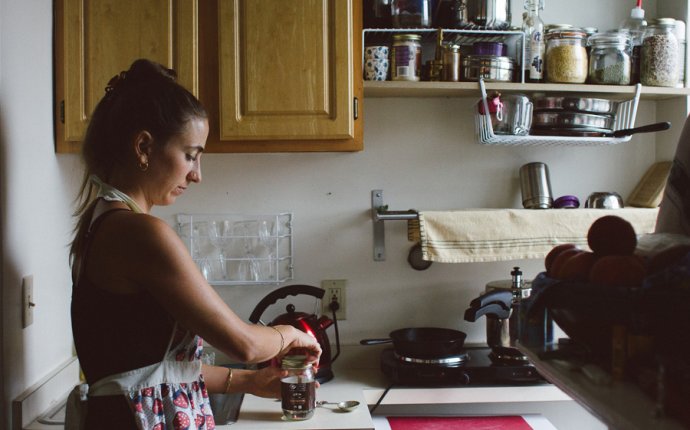
Ayurveda Massachusetts

Tap into the power of Ayurveda to get rooted in healthy, lasting habits with these dosha-balancing practices. Then sign up to delve deeper, as Larissa Carlson and LifeSpa founder John Douillard demystify yoga's sister science in our upcoming Ayurveda 101 online course.
Larissa Carlson had her first Ayurvedic health consultation in 2004 at the Kripalu Center for Yoga & Health, tucked away in Western Massachusetts’s Berkshire Mountains. It was bittersweet: The Ayurvedic doctor informed her that some of her favorite habits— eating on the go and staying up to watch The Late Show with a bowl of ice cream—were to blame for the fatigue and bloat she was hoping to shake. Calling upon India’s 5, 000-year-old holistic health science, the doc had a few simple suggestions: Don’t snack after 9 p.m., and go to bed and wake up earlier. The results? Transformative. “After just a couple of days, I wasn’t as sluggish and puffy. It changed my whole energy level, ” says Carlson.
This is the magic of Ayurveda. Its diet- and lifestyle-based prescriptions are aimed at getting you back in touch with your true nature, so that making lasting, healthy changes becomes less of a battle. They’re designed to balance three energies, or doshas, that exist within all of us: vata (space and air), pitta (fire and water), and kapha (water and earth). Carlson was suffering from an excess of pitta: She was impatient, attracted to super-heating, aggressive yoga classes, and always on the go. As she followed the doctor’s suggestions, the benefits filtered into all aspects of her life, including her yoga practice. “I stopped forcing my body into difficult poses and started to move more gently, more sustainably, ” Carlson says. As she tamed her pitta tendencies, she became more patient with herself. “Ayurveda helps me smooth out my rough edges, ” she says.
See also How Bitter Foods Balance Your Diet + Your Doshas
Fundamentally, Ayurveda is about finding harmony with nature, says John Douillard, a certified Ayurvedic practitioner (CAP) with 25 years experience teaching Ayurveda. “You want to travel downstream with the current of life, still, calm, and aware, ” he explains. “If you’re always going upstream, all you can do is paddle and try to stay in the boat—life becomes a struggle and there’s no opportunity for transformation.” Carlson’s personal Ayurvedic journey is what inspired her to become a CAP herself; in 2004, she became a faculty member at Kripalu, and then, in 2013, the dean of Kripalu’s School of Ayurveda, a job she held until just recently. During her time at Kripalu, and over 11 years of teaching yoga, she has reached and trained hundreds of students on the path to change.
Take Tracy Maltz, a physical therapist and yoga teacher based in New York City, who finished a 500-hour teacher training at Kripalu this summer with both Carlson and Douillard. Part of that training was on dosha balancing. Maltz is kapha dominant and has, she says, struggled with her weight her entire life. “At Kripalu, I learned I wasn’t eating for my dosha, ” says Maltz. She was advised to give up consuming heavy breakfasts, dairy, raw foods, and ice in order to keep her digestive fire, or agni—the Ayurvedic equivalent of metabolism—stoked. And in the mornings, she started going to more vigorous group yoga classes instead of her inconsistent and gentler home practice. With these and other lifestyle changes, she was able to lose 1o pounds in two months. “I now feel balanced, like I’m in my true body, ” she says. Maltz’s gradual-but-steady weight loss points to another key to success through Ayurveda: taking it slow. “I do not recommend taking dramatic, huge steps all at once, ” says Carlson. “Little steps won’t shock your nervous system, [thus] giving it time to adjust to change.”
Ready for your Ayurvedic transformation? Autumn is a great time in Ayurveda to ground yourself in healthy habits, before the holiday chaos. Explore which dosha might be out of balance below; then find asana, self-care, and diet tips from Carlson, and watch positive change stick.
See also Doshas Decoded: Learn About Your Unique Mind & Body Type
Begin to balance your constitution with these dosha-specific Ayurveda and yoga practices. Still not quite sure which dosha is out of balance for you? Try each of the three asana sequences and notice how you feel afterward, then stick with the sequence that feels most nourishing. Be sure not to skip the restorative yoga poses at the end of the sequences—they’re suitable for all constitutions during vata season, in late fall and winter.
Vata
You may have too much vata if you’re an insomniac, restless, or anxious. Vata imbalance can also mean low-back and hip tension, gas or constipation, and feeling cold.
Get the Yoga for Your Dosha: A Grounding Vata Yoga Sequence
Pitta
A pitta imbalance can present as acid indigestion, acne, bloodshot eyes, agitation, or a short temper. You may feel hot, jealous, and obsessed with perfection.
Get the Yoga for Your Dosha: A Refreshing Pitta Yoga Sequence
Kapha
Too much kapha can lead to congestion, weight gain, water retention, lack of motivation, foggy thinking, sluggishness, and feeling possessive and stubborn.
Get the Yoga for Your Dosha: A Congestion-Clearing Kapha Yoga Sequence
See also Quiz: What’s Your Dosha?
About Our Pro
Teacher and model Larissa Carlson is the former dean of the Kripalu School of Ayurveda, a certified Ayurvedic practitioner, and a yoga teacher trainer based in Massachusetts. You can find her at larissacarlson.com.














